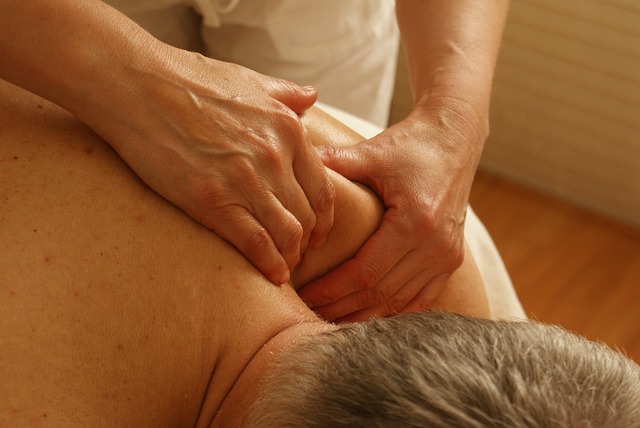Posts by Gregory Lind
Leaving Pain Behind with Exercise and Chiropractic Therapy
Exercise and chiropractic therapy are important for managing back pain
As a general rule, daily exercise is recommended for people concurrent with their chiropractic treatment for a variety of reasons. Studies show that exercise and stretching strengthen key muscles, reduce acute and chronic pain, improve range of motion and overall boost your quality of life, especially if you are living with a degenerative condition of the spine. A reciprocal relationship exists between chiropractic therapy and exercise in which each enhances the effectiveness of the other.
How chiropractic and exercise can still work for people who find it difficult to move without pain
We want to get you exercising, but not if it’s going to cause you harm. Depending on your level of pain and ability to move, we design a custom exercise plan that will help you get the benefits of movement without causing you too much pain. For example:
- Flexion intolerance: for people who feel pain in a bent-over position, often coinciding with a disc injury, we focus on restoring neutral posture to get you out of a flexion-dominant position during the day and work on developing the core stabilizing muscles to reduce the amount of pain felt during flexion.
- Extension intolerance: usually seen in people who are primarily on their feet, this position is characterized by an increased arch in the back and often the patient will often present with anterior pelvic tilt. With intolerance to extension-based posture, we focus on exercises that avoid arching the back and exercises that add anterior core control.
Combining exercise with chiropractic care
At our office, we want to help you break out of a mold of chronic or acute pain by combining exercise with chiropractic care. Taking into account your condition and level of fitness, we will give you instructions specific to your condition before any exercise program begins. Through chiropractic adjustment, cardiovascular exercise, strengthening and stretching, we can help you mitigate the symptoms of pain that have a grip on your life; give our office a call to schedule an appointment today.
Cell rejuvenation therapy safely reverses aging in mice
Imagine living to be 200 or more, and healthy as a teenager the who time.
A-lot-Longer Healthier Living Could be right around the corner.
“We are elated that we can use this approach across the life span to slow down aging in normal animals. The technique is both safe and effective in mice,” says Juan Carlos Izpisua Belmonte, co-corresponding author and a professor in Salk’s Gene Expression Laboratory.
Do I have your attention?
Here is where you can skip ahead to reading the article in Science Daily:
Salk Institute. “Cellular rejuvenation therapy safely reverses signs of aging in mice: Researchers treated mice with anti-aging regimen beginning in middle age and found no increase in cancer or other health problems later on.” ScienceDaily. ScienceDaily, 7 March 2022. <www.sciencedaily.com/releases/2022/03/220307113027.htm>.
It Keeps Getting Better
Age comes with ailments, including brittle bones and weaker muscles to increased risks of cardiovascular disease and cancer, and neurological degradation. Now, scientists at the Salk Institute, in collaboration with Genentech, a member of the Roche group, have shown that they can safely and effectively reverse the aging process in middle-aged and elderly mice by partially resetting their cells to more youthful states. The side effects of trying to keep cells younger could be increased neural capacity, meaning age-related dementia that affects millions of people may finally have an effective treatment.
Today’s science couldn’t be more exciting and you couldn’t find a better time in history to live and then this comes along. The news is too amazing not to share. Of course, all these models and experiments are brand new and the world needs independent verification and we want to make sure the effects will be safe long term. But you would have to already be dead not to get excited about the prospect of the kinds that we are talking about here.
The details
Cells isolated from older people or animals have different patterns of chemicals along their DNA — called epigenetic markers — compared to younger people or animals. Scientists know that adding a mixture of four reprogramming molecules — Oct4, Sox2, Klf4 and cMyc, also known as “Yamanaka factors” — to cells can reset these epigenetic marks to their original patterns. This approach is how researchers can dial back adult cells, developmentally speaking, into stem cells.
This part of the data is not new and has been verified going back to 2016. These Yamanaka factors have been given to mice at many ages and timescales since then to check effectiveness and safety. And amazingly there were no increased rates of cancers These same mice did have similarities to younger mice but, even in young mice, the Yamanaka factors can accelerate muscle regeneration furth. Like super mice!
Read more here: https://www.sciencedaily.com/releases/2022/03/220307113027.htm
Cooling Down with Child’s Pose
The cool down is an important part of any exercise routine
But many people forego it altogether in favor of hopping in the shower and getting on with their day. Devoting a few extra minutes to stretching at the end of your work out will help to finish off the work out on a well-rounded note, helping you to enjoy the endorphin release and transition back to normal activity gently rather than abruptly. Because your muscles are warm and your body has been moving at a higher intensity, we want to focus on a more static form of stretching than the warm up.
Child’s pose
A static stretch that passively stretches the muscles of the back torso while relaxing the muscles in the front of the body. It targets the hips, thighs and ankles and allows you to focus on deep breathing, which fights stress and fatigue and reduces your heart rate as you transition out of exercise mode.
- Being on hands and knees
- Spread knees as wide as hips, but keep big toes touching.
- Sit on your heels
- Exhale and lay torso down between your thighs
- Lay hands, palm up, alongside torso and release your shoulders toward the floor.
- Rest in this pose for 30 seconds to three minutes.
Optimizing your entire workout routine with our help
We support your body no matter what physical endeavor you choose. Through chiropractic adjustment, we improve range of motion and negate pain signals that result from nerve impingement; with trigger point therapy we release muscles from tension and help you feel relaxed. Let us help you overcome any obstacles that are holding you back from truly feeling well. Give our office a call to schedule an appointment today.
Releasing your Neck from Tightness
Have you ever complained of a stiff, sore neck…
…and then not done anything about it? Join the club…we humans are a funny race when it comes to taking action to prevent pain. This is unfortunate because most modern activities are putting more of a burden on our neck, causing strain to the muscles and creating a greater risk for degenerative conditions in the vertebrae. The most common picture of muscular imbalance in the neck involves the muscles in the front being overextended while those in the back are short and tight. Postural awareness begins by listening to your body: when you feel pain, don’t ignore it! You can use simple stretching techniques to release tension from muscles and conditioning them to hold your head balanced atop the spine.
Let’s start being proactive with our pain
Next time you feel a stiffness in the neck, try a few of these easy stretches to release those muscles:
- Head rotation: tuck your chin toward your chest, then begin performing a crescent motion by rotating your head from shoulder to shoulder.
- Ear-to-shoulder: grasp the chair with your right hand to stabilize your body, then place your left hand on top of your head. Gently push your head down toward your left shoulder, feeling a deep stretch in the neck. Hold 5 seconds then repeat on other side.
- Behind-the-back: stand with feet shoulder-width and reach both hands behind you, grabbing your left wrist with the right hand. Pull your left arm away from your body. Hold 5 seconds and repeat with other arm.
How we help
If you are suffering from chronic neck stiffness or pain, we want to find the true source of your condition. Most often, dysfunction in the neck is related to muscles that have become imbalanced- the scalene group in particular. We can identify parts of the neck that are pulled out of position by your lifestyle and through strengthening and stretching retrain them into a position that is supportive of your head and preventative toward pain.
Tracking Your Back Pain with a Daily Journal
Coming to grips with your pain
If you live with chronic back pain, whether this is a recent affliction or a lifelong struggle, you need to be proactive about taking care of yourself. Too many of us simply ignore the pain until it accumulates into a debilitating episode that takes us out of action. At our office, we want to understand more about your pain to help us diagnose your unique situation.
Strategies for overcoming back pain
To create more effective strategies for overcoming back pain and dysfunction, we need to meticulously record your pain. To this end, we recommend that our clients maintain a daily journal of their spinal health. You can start this even before visiting your chiropractor for the first time. Record the location, type of pain, severity, and time of day when it occurs. If possible, also keep track of your levels of movement, your diet, and your exercise regime; these things may seem unrelated, but they play a central role in chronic back pain.
Working together to overcome your back pain
Sometimes all it takes us is a conversation to effect powerful changes in the way your spine feels. This conversation can be made all the more effective if we have a first-hand, in-the-moment account of your pain. When combined with diagnostic imaging, postural analysis, and a full physical examination, we will paint a comprehensive picture of your spine and what is causing your pain. From here, we can design effective strategies to overcome that pain and its underlying conditions. Give our office a call to schedule an appointment today.
Chiropractic for Pain Relief
Chiropractic Is effective at relieving pain
The core of chiropractic theory holds that the spine affects the function of your entire body. Therefore, in order to regulate the function of your body, including keeping pain at bay, a proper alignment of the spine must be maintained to allow you to move your best and allow your body to heal itself most effectively. But chiropractic doesn’t stop here when it comes to treating pain!
Our Chiropractic Office Is Your Pain Relief Center
We offer the following treatments to help you leave the pain behind:
- Spinal manipulation: a therapeutic treatment that applies pressure to the joint that accentuates your vertebrae in order to relieve pressure and reduce pain.
- Biomechanics counseling: are you using your body efficiently during the day? Or are you causing yourself more pain than is necessary? We can help you find ways to move more and move better.
- Postural analysis and advice: sitting has become the defining posture of our day and most people are causing harm to their spines by the way they sit. We can help you give your back a break and make it easier to sit up straight.
- Ergonomic training: we want to make sure that your workspace is supporting you and not causing further harm to your spine.
Pain relief
Our ultimate goal is to help you find relief from pain and overcome any conditions that are causing you trouble in your daily life. Our help doesn’t stop in the office, as we can give you a detailed plan for managing your pain from home. Give our office a call to schedule an appointment and start leaving the pain behind today.
Chiropractic for Frozen Shoulder
What is frozen shoulder?
Less commonly known as adhesive capsulitis, frozen shoulder refers to stiffness, pain, and a limitation in range of movement in the shoulder. It commonly occurs after an injury, whether acute or from repetitive strain; tissues surrounding the shoulder joint stiffen, and scar tissue begins to form. When this occurs, any movement involving the shoulder can cause pain. This is a slow-moving condition, often taking more than a year to disappear.
Our goals for treating frozen shoulder:
- Use conservative manipulative therapy to diminish the severity of pain
- Improve mobility in the shoulder and cervicothoracic spine
- Reduce associated recovery time
Chiropractic care for frozen shoulder
Chiropractic care can be effective augment for treating your frozen shoulder. Through the use of manual adjustments to the affected joint and the cervicothoracic spine, we can help to reduce pain and restore mobility. Low-force adjustments are found to be the most effective for treating frozen shoulder, as well as those delivered by the Activator Method. If you are interested in recovering the lost range of motion, relieving pain, and rehabilitating your frozen shoulder, give our office a call to schedule an appointment today.
Range of Motion Where it Matters: Protecting your Neck
Few places are as important for a range of motion as the neck
Imagine that your neck had no independent articulation. While this may perhaps benefit people who suffer injuries from movement, it would make living a real pain in the…you guessed it. You would have to move your entire upper body to see from side to side or bend backward and forward to see up and down. For many people, the unfortunate reality is that injury or repetitive trauma has reduced their range of motion and makes normal tasks like looking side to side painful.
What is the normal range of motion in the neck?
There are four primary movements:
- Flexion: head to chest
- Extension: looking up toward the sky
- Lateral Bending: ear to shoulder
- Rotation: turning your head so that your chin is over the shoulder (or thereabouts)
What limits the range of motion in the neck?
Injuries to soft tissue in the neck, degeneration or injury to cervical vertebrae and spinal joints all make it difficult to move your neck without experiencing pain. Once you stop moving your neck, the muscles normally activated for movement cease to be used and start to atrophy, and range of motion is limited further. Injuries can be the direct result of trauma, from a car accident for example, or from a slow wearing down over time, for example from chronic poor posture.
What can we do about maintaining the range of motion in the neck?
At our office, we help you preserve a range of motion in the neck. A primary malefactor is poor posture- in particular forward head posture which sees the head positioned forward of its balanced point atop the spine. By resetting your posture, restoring spinal alignment through the cervical vertebrae, and adding strength and tone to the muscles of the neck and upper back, we achieve positive effects in your neck’s range of motion. If you are interested in leaving neck pain behind, give our office a call to schedule an appointment today.
Stretching in the Shower: An Excellent Idea
Why shower and stretch?
The shower is as good a place as any to have a stretch. It has the advantage of being a calming environment and, as the hot water cascades down on your weary muscles, why not turn up the relaxation one more notch by throwing in a couple of simple stretches? A few things to keep in mind: focus on being mindful by breathing deeply and avoid letting yourself become too dizzy; make sure you are properly hydrated and that the water temperature is set comfortably. Cool water has a tendency to tighten mussels while warmer water tends to loosen them.
A few shower-worthy stretches
- The clasped-neck stretch: Clasp two hands on the crown of your head and gently lower your head down toward your chest, effecting a double chin. Hold for 5-10 deep breaths.
- Release the shoulders: stand as upright as possible and squeeze your shoulders together. Hold 3 deep breaths, release and repeat. To add to the stretch and open up your chest cavity further, spread out your arms behind you as you squeeze.
- The back-bend: Stand upright, place your hands on your lower back/upper buttocks with fingers pointing upward and arch your back. Hold 5-10 deep breaths, release and repeat.
Warm water and stretching both have the advantage of releasing your muscles from tension. After a shower and a stretch, your body will be at one of its most relaxed points possible during the day. By practicing deep breathing, you are also calming the mind. This makes the shower and stretch combination a powerful tool for people who have difficulty falling asleep.
Stretching (and showering) is an integral part of our wellness plan
We believe that starting with 10 minutes of dedicated stretching a day can set you on a path toward doing great things for your body. Always stretch where you feel most comfortable- for some people this is in public, for others it is in the shower. Find your happy place and stretch it out! If you need help addressing long-standing muscle tension, back pain or nerve dysfunction related to subluxation, give our office a call to schedule an appointment today.
Study Finds Cannabis Compounds Prevent Infection By Covid-19 Virus
Our science research dollars are not just up in smoke this time. The medical community seems to have found another tool to fight the spread of COVID-19. Researchers at Oregon State University have published a report that claims, “Cannabinoids Block Cellular Entry of SARS-CoV-2 and the Emerging Variants.”
I’m sure more research will be needed and getting volunteers will be easy. If this is true the Cannabinoids industry will be having be having some fun with this new information. You can read a quick summery on the Forbs website linked here:
It looks like even the Variants can’t get past the has barrier. “Although further research is needed, van Breemen noted that study shows the cannabinoids could be developed into drugs to prevent or treat Covid-19.”
So for a bit of fun, when the office asks how high are you? You can say back, “no man, It’s Hi how are you! I did my research on the internet and now I’m fighting the pandemic.” And blow some cure in his face. Or maybe let your doctor prescribe it first.









